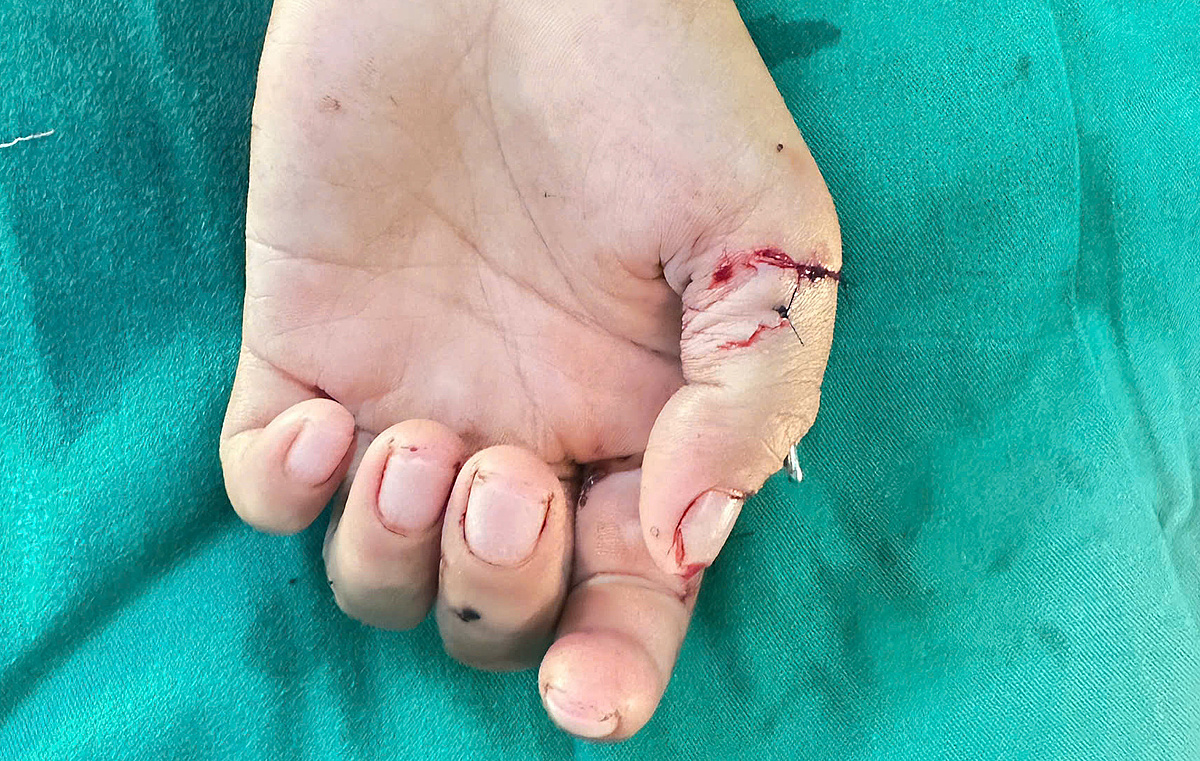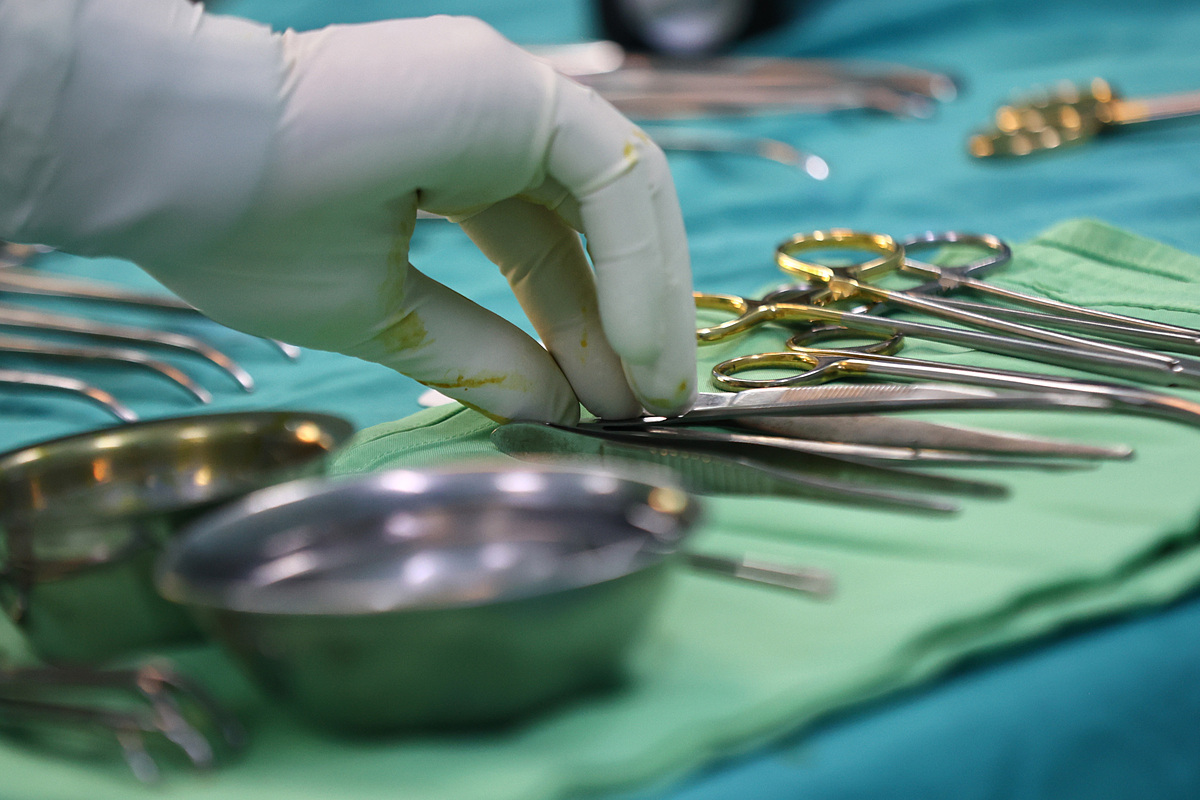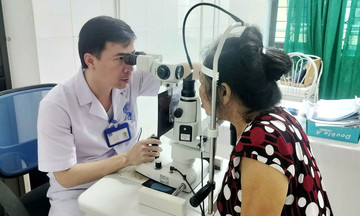On 5/8, Dr. Nguyen Thi Ngoc Nga, deputy head of the Burns and Reconstructive Surgery Department, reported that the boy's left thumb and index finger were barely attached by a thin flap of skin. Without prompt microsurgical intervention, he risked losing both fingers completely.
"The thumb and index finger play a crucial role in hand function. Losing these two fingers means losing most of the ability to grip and grasp," Dr. Nga explained.
The surgical team immediately began the complex procedure to reconnect the blood vessels and nerves, and repair the bones. The biggest challenge was the location of the injury, right at the thumb's metacarpophalangeal joint. Imprecise handling could have resulted in stiffness and reduced range of motion.
Under a microscope, the surgeons discovered numerous foreign objects lodged within the soft tissue, along with scattered damage to the nerves and blood vessels. The extremely small diameter of the blood vessels (about 0.3-0.4 mm), some of which were crushed, required meticulous microsurgical stitching, grafting, and the identification of alternative branches for reconnection.
 |
The boy's fingers after being reattached. Photo: Hospital provided |
The boy's fingers after being reattached. Photo: Hospital provided
Following the surgery, blood flow was restored to both fingers, the fingertips regained their pink color, and slight movement was observed at the metacarpophalangeal joint. The patient is scheduled for tendon repair in the near future to fully restore hand function.
According to Dr. Nga, seemingly minor injuries in children can sometimes cause significant functional and cosmetic damage. Parents should carefully instruct older children on the safe use of sharp objects, emphasizing potential risks and self-protection measures. Young children should be supervised closely, and dangerous objects should be kept out of their reach.
 |
Surgery at Children's Hospital 2. Photo: Quynh Tran |
Surgery at Children's Hospital 2. Photo: Quynh Tran
Le Phuong












